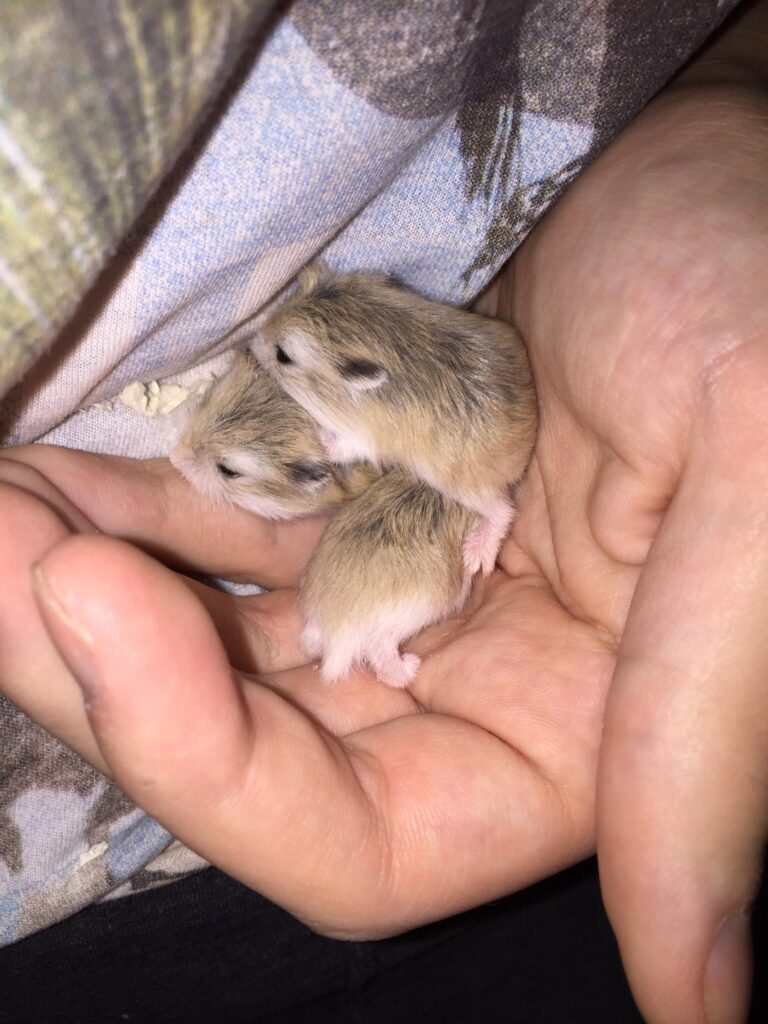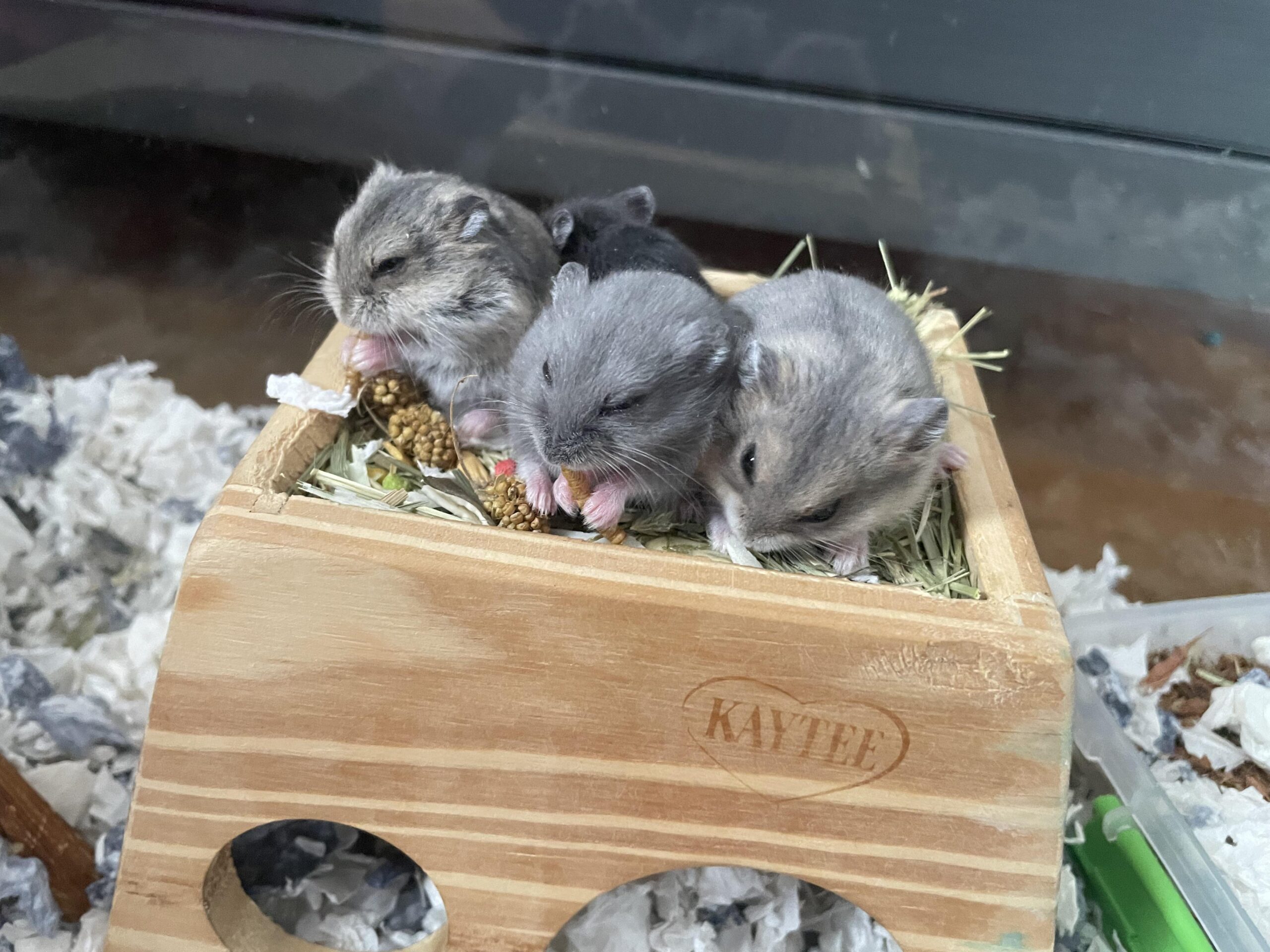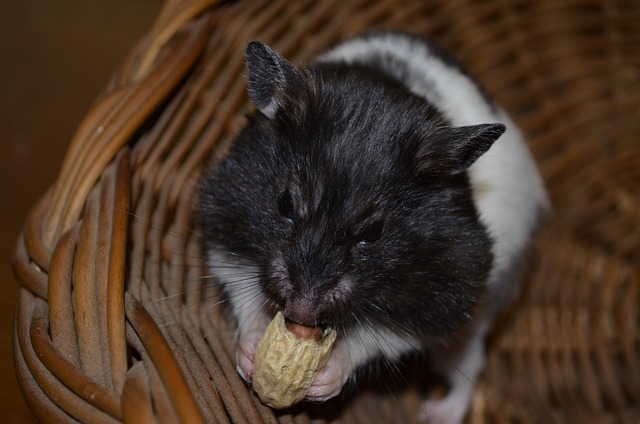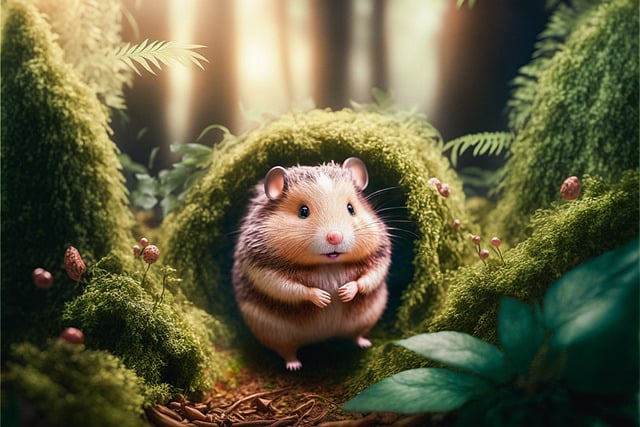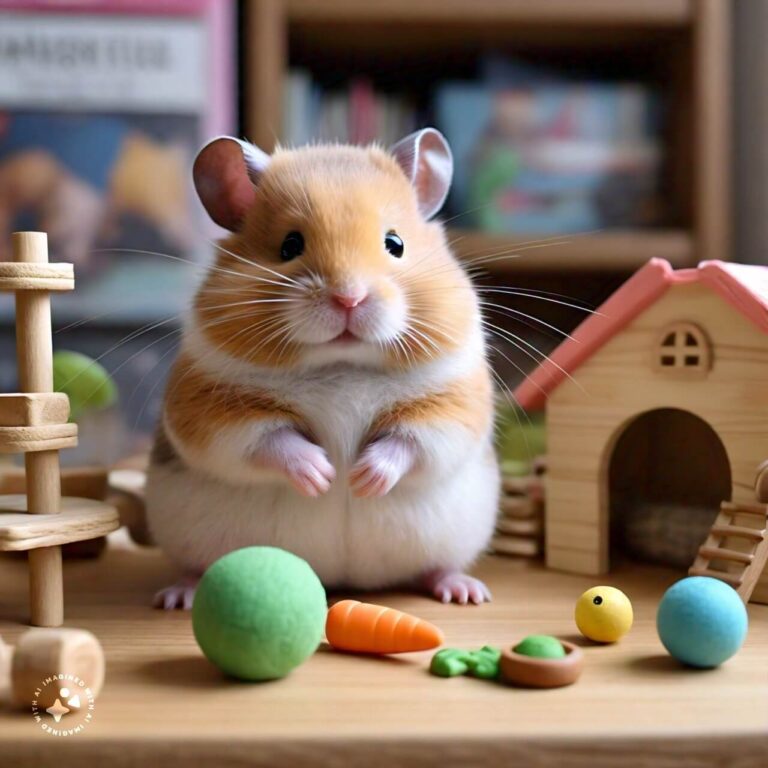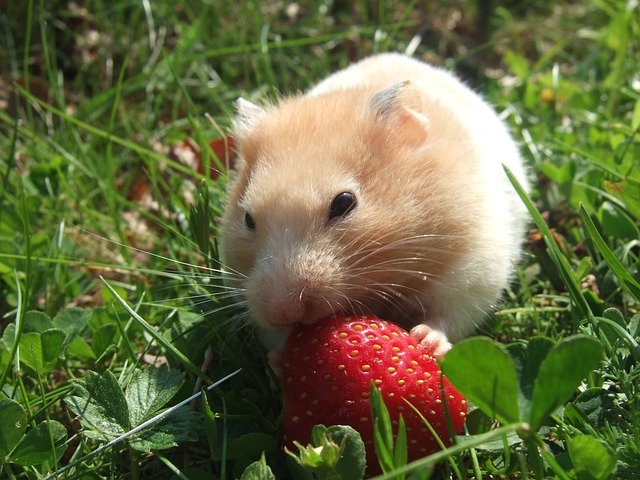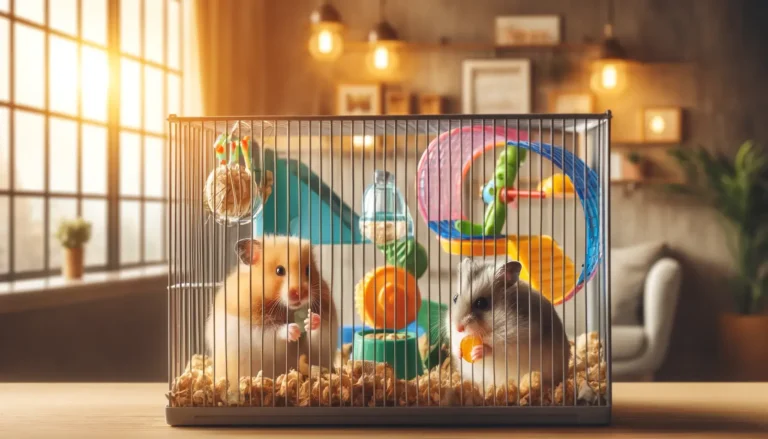Why Hamsters Eat Their Babies – Hamsters.pk
Stress and Fear: The Primary Triggers for Cannibalism in Hamsters
Hamsters are often considered adorable and low-maintenance pets, but many owners are shocked to discover that these small rodents can sometimes engage in the disturbing behavior of eating their own babies. While this act may seem inexplicable and cruel, it is essential to understand the underlying causes that drive hamsters to commit infanticide. Among the various factors that contribute to this behavior, stress and fear stand out as the primary triggers for cannibalism in hamsters.
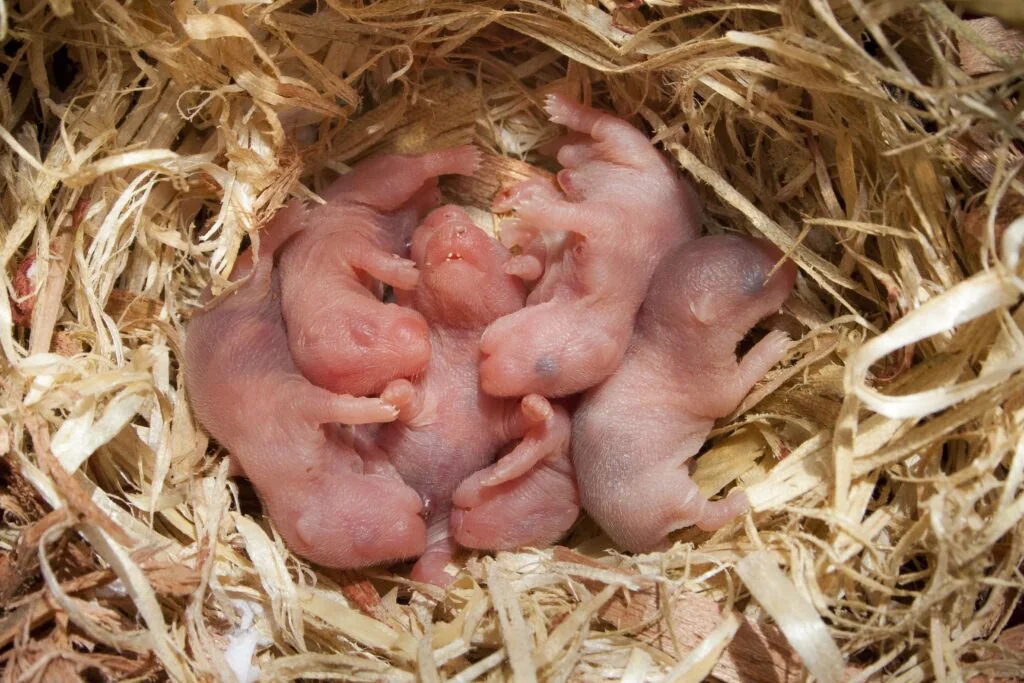
The Impact of Stressful Environments
Hamsters are highly sensitive animals that can easily become stressed when their living conditions are not optimal. When a hamster feels threatened or uncomfortable in its surroundings, it may resort to extreme measures to protect itself and its offspring. Common stressors that can lead to cannibalism include:
- Inadequate cage size: Hamsters require ample space to move around, burrow, and create separate areas for sleeping, eating, and elimination. When confined to a small cage, they can experience heightened levels of stress.
- Lack of privacy: Hamsters are solitary animals that need a secure, private place to rest and raise their young. If their habitat lacks sufficient hiding spots or is constantly disturbed, they may feel exposed and vulnerable.
- Excessive noise and activity: Loud noises, bright lights, and frequent handling can all contribute to a hamster’s stress levels. A busy household with children or other pets may create an environment that is too stimulating for these sensitive creatures.
The Role of Fear in Cannibalism
In addition to environmental stressors, fear can also play a significant role in triggering cannibalistic behavior in hamsters. When a mother hamster feels that her babies are in danger, she may resort to eating them as a means of protecting them from perceived threats. Some common fear-inducing situations include:
- Presence of predators: If a hamster senses the presence of a predator, such as a cat or a dog, near its cage, it may become extremely anxious and view its babies as a liability.
- Unfamiliar scents: Hamsters have a highly developed sense of smell, and the introduction of new scents in their environment can cause them to feel threatened. This can include the scent of a new pet or even a change in the owner’s perfume or soap.
- Handling of the babies: If the owner or another person attempts to handle the baby hamsters too soon after birth, the mother may perceive this as a threat and respond by eating her offspring to protect them from harm.
Preventing Stress and Fear-Induced Cannibalism
To minimize the risk of cannibalism in hamsters, it is crucial for owners to create a safe, stress-free environment that caters to their pet’s natural instincts and needs. This can be achieved by:
- Providing a spacious, well-ventilated cage with plenty of room for burrowing and exploration.
- Offering ample hiding spots and nesting materials to ensure privacy and security.
- Keeping the cage in a quiet, low-traffic area of the home, away from other pets and excessive noise.
- Avoiding unnecessary handling of the hamster and its babies, especially during the first week after birth.
By understanding the primary triggers of stress and fear in hamsters and taking steps to create a suitable environment, owners can significantly reduce the likelihood of cannibalistic behavior and ensure the health and well-being of their furry companions.
Insufficient Nutrition: How Diet Deficiencies Can Lead to Infanticide
Infanticide, the act of killing one’s own offspring, is a distressing phenomenon observed in various animal species, including hamsters. While factors such as stress and fear can contribute to this behavior, insufficient nutrition and diet deficiencies also play a significant role in triggering infanticide among hamsters. In this article, we will explore how inadequate nutrition can lead to this devastating outcome and discuss the importance of providing a balanced diet to prevent such occurrences.
The Significance of a Balanced Diet for Hamsters
Hamsters have specific nutritional requirements that must be met to ensure their overall health and well-being. A balanced diet for hamsters should include:
- High-quality hamster pellets: These commercially prepared foods are formulated to provide the essential nutrients, vitamins, and minerals that hamsters need.
- Fresh vegetables and fruits: Offering small amounts of fresh produce, such as carrots, cucumbers, and apples, can provide additional vitamins and minerals while adding variety to their diet.
- Protein sources: Hamsters require adequate protein for growth and development. Suitable protein sources include cooked egg whites, mealworms, and crickets.
When a hamster’s diet lacks essential nutrients, it can lead to various health issues, including weakened immune systems, stunted growth, and reproductive problems. These deficiencies can also contribute to the occurrence of infanticide.
The Link Between Malnutrition and Infanticide
Inadequate nutrition can influence a mother hamster’s decision to commit infanticide in several ways:
- Inability to produce sufficient milk: A malnourished mother hamster may struggle to produce enough milk to feed her litter. In such cases, she may resort to killing and eating some of her babies to ensure the survival of the remaining offspring.
- Decreased maternal instincts: Malnutrition can lead to hormonal imbalances that affect a mother hamster’s maternal instincts. A deficient diet may cause her to become indifferent or even hostile towards her babies, increasing the likelihood of infanticide.
- Cannibalism as a survival mechanism: In extreme cases of malnutrition, a mother hamster may view her babies as a potential food source. By consuming her offspring, she may be attempting to obtain the nutrients necessary for her own survival.
Preventing Diet-Related Infanticide
To minimize the risk of infanticide caused by insufficient nutrition, hamster owners must prioritize providing a balanced and appropriate diet. Here are some steps to ensure your hamster receives the necessary nutrients:
- Choose high-quality hamster food: Select a reputable brand of hamster pellets that meets your pet’s specific nutritional needs. Avoid generic or low-quality foods that may lack essential nutrients.
- Offer fresh produce in moderation: While fresh vegetables and fruits can be beneficial, they should be given in small quantities to prevent digestive issues. Remove any uneaten produce daily to avoid spoilage.
- Provide protein sources: Include appropriate protein sources in your hamster’s diet, such as cooked egg whites or insects, to ensure they receive the amino acids necessary for growth and development.
- Monitor food intake: Regularly check your hamster’s food supply to ensure they have access to fresh, uncontaminated food. Discard any spoiled or uneaten food promptly.
- Consult with a veterinarian: If you have concerns about your hamster’s diet or nutritional needs, consult with an experienced exotic animal veterinarian for guidance and recommendations.
By understanding the critical role that nutrition plays in preventing infanticide and providing a balanced, species-appropriate diet, hamster owners can create a healthier environment for their furry companions and reduce the likelihood of this tragic behavior occurring.
Overcrowding and Territorial Behavior: The Role of Housing Conditions in Hamster Cannibalism
Hamsters are solitary animals that require their own space to thrive. When housed in inadequate or overcrowded conditions, these small mammals can exhibit heightened levels of stress and aggressive behavior, including the disturbing act of cannibalism. In this article, we will explore how overcrowding and territorial behavior contribute to the occurrence of hamster cannibalism and discuss the importance of providing appropriate housing conditions to prevent this distressing phenomenon.
The Impact of Overcrowding on Hamster Behavior
Hamsters are naturally territorial creatures that establish their own domains in the wild. In captivity, it is essential to respect their solitary nature by providing them with sufficient space to create their own territories. When hamsters are housed in overcrowded conditions, several problems can arise:
- Increased aggression: When hamsters feel their personal space is being invaded, they may become aggressive towards their cage mates. This aggression can escalate to fighting, injuries, and even cannibalism.
- Heightened stress levels: Overcrowding can cause hamsters to feel stressed and anxious, as they lack the ability to escape from perceived threats or establish their own territories. Chronic stress can weaken their immune systems and lead to various health issues.
- Resource competition: When too many hamsters are housed together, they may compete for limited resources such as food, water, and nesting materials. This competition can further exacerbate aggressive behavior and lead to cannibalism.
Territorial Behavior and Cannibalism
Hamsters are fiercely territorial animals that will defend their space against intruders. In the context of cannibalism, territorial behavior can manifest in the following ways:
- Protection of young: Mother hamsters may view their babies as potential competitors for resources and space. In some cases, a mother may kill and consume her own offspring to eliminate perceived threats to her territory.
- Dominance displays: In situations where multiple hamsters are housed together, dominant individuals may assert their authority by attacking and cannibalizing subordinate cage mates. This behavior is more likely to occur in overcrowded conditions where territorial disputes are common.
- Scent marking: Hamsters use scent marking to establish and maintain their territories. When a new hamster is introduced into an established territory, the resident hamster may view the newcomer as a threat and resort to cannibalism to protect its domain.
Providing Appropriate Housing Conditions
To minimize the risk of cannibalism caused by overcrowding and territorial behavior, it is crucial to provide hamsters with appropriate housing conditions. Here are some guidelines to follow:
- Individual housing: Unless breeding, hamsters should be housed individually to prevent territorial disputes and aggression. Each hamster should have its own cage with ample space to move around and create separate areas for sleeping, playing, and eliminating.
- Adequate cage size: Hamster cages should be spacious enough to accommodate their natural behaviors and provide a sense of security. A minimum cage size of 24 inches by 12 inches by 12 inches is recommended for most hamster species.
- Proper enrichment: Hamster cages should include various enrichment items such as tunnels, hideouts, and chew toys to keep them mentally stimulated and reduce stress levels. These items also provide additional opportunities for territorial marking and exploration.
- Gradual introductions: If you must house multiple hamsters together, such as in breeding situations, introduce them gradually and under close supervision. Provide plenty of hiding spots and separate food and water sources to minimize resource competition.
By understanding the role that overcrowding and territorial behavior play in hamster cannibalism and providing appropriate housing conditions, pet owners can create a safer and more harmonious environment for their furry companions. Adequate space, individual housing, and proper enrichment are key factors in preventing this distressing behavior and ensuring the well-being of pet hamsters.
Instinctive Survival Mechanisms: Understanding the Evolutionary Basis for Hamster Infanticide
Infanticide, the act of killing one’s own offspring, is a disturbing behavior observed in various animal species, including hamsters. While factors such as stress, malnutrition, and overcrowding can contribute to this phenomenon, it is essential to recognize that infanticide also has an evolutionary basis rooted in instinctive survival mechanisms. In this article, we will explore the evolutionary context of hamster infanticide and discuss how these deeply ingrained behaviors have been shaped by natural selection to ensure the survival of the species.
The Evolutionary Perspective on Infanticide
From an evolutionary standpoint, the primary goal of any species is to pass on its genes to future generations. However, in the face of limited resources and environmental pressures, animals may resort to seemingly cruel behaviors to maximize their reproductive success. Infanticide in hamsters can be understood through this lens, as it may serve various evolutionary purposes:
- Resource allocation: In situations where resources such as food and space are scarce, a mother hamster may choose to invest her energy in her own survival rather than in raising a litter. By culling some or all of her offspring, she can conserve resources and increase her chances of reproducing again in the future.
- Genetic quality control: Infanticide may also function as a means of ensuring the genetic quality of offspring. If a mother hamster senses that her babies are weak, sick, or have congenital defects, she may choose to eliminate them to focus her resources on healthier, more viable young.
- Mate competition: In some cases, male hamsters may kill offspring sired by other males to eliminate potential competitors and increase their own reproductive success. This behavior is more common in species where males have limited access to females and must compete for mating opportunities.
The Role of Maternal Instincts
While infanticide may seem contradictory to the concept of maternal instincts, it is important to recognize that these instincts have evolved to prioritize the long-term survival of the species over the immediate welfare of individual offspring. A mother hamster’s decision to commit infanticide is not a conscious choice but rather an instinctive response shaped by evolutionary pressures. Factors that can trigger this instinctive behavior include:
- Hormonal changes: Hormonal fluctuations during pregnancy and after birth can influence a mother hamster’s behavior towards her young. Imbalances in hormones such as prolactin and oxytocin may disrupt maternal bonding and increase the likelihood of infanticide.
- Environmental stressors: Harsh environmental conditions, such as extreme temperatures or lack of suitable nesting sites, can trigger survival instincts that prioritize the mother’s well-being over that of her offspring.
- Genetic predisposition: Some researchers suggest that the propensity for infanticide may have a genetic component, with certain individuals or lineages being more prone to this behavior due to inherited traits.
Balancing Instincts and Captive Care
Understanding the evolutionary basis for hamster infanticide does not mean that this behavior is inevitable or acceptable in captive settings. As pet owners, it is our responsibility to provide our hamsters with an environment that minimizes stress, meets their nutritional needs, and offers appropriate housing conditions to reduce the likelihood of infanticide. Some steps to take include:
- Providing spacious, individual housing: Ensuring that each hamster has its own cage with ample space and enrichment can help reduce territorial stress and aggression.
- Offering a balanced diet: Feeding your hamsters a high-quality, nutritionally complete diet can help prevent malnutrition-related infanticide.
- Minimizing environmental stressors: Keeping hamster cages in a quiet, temperature-controlled area and avoiding unnecessary disturbances can help create a more stable and secure environment.
- Monitoring breeding carefully: If you choose to breed hamsters, be prepared to separate the mother from the father and provide close supervision to ensure the safety of the litter.
By understanding the evolutionary context of hamster infanticide and taking steps to provide an optimal captive environment, pet owners can work to minimize the occurrence of this distressing behavior while still respecting the deeply ingrained instincts that have shaped these fascinating creatures over millions of years of natural selection.
